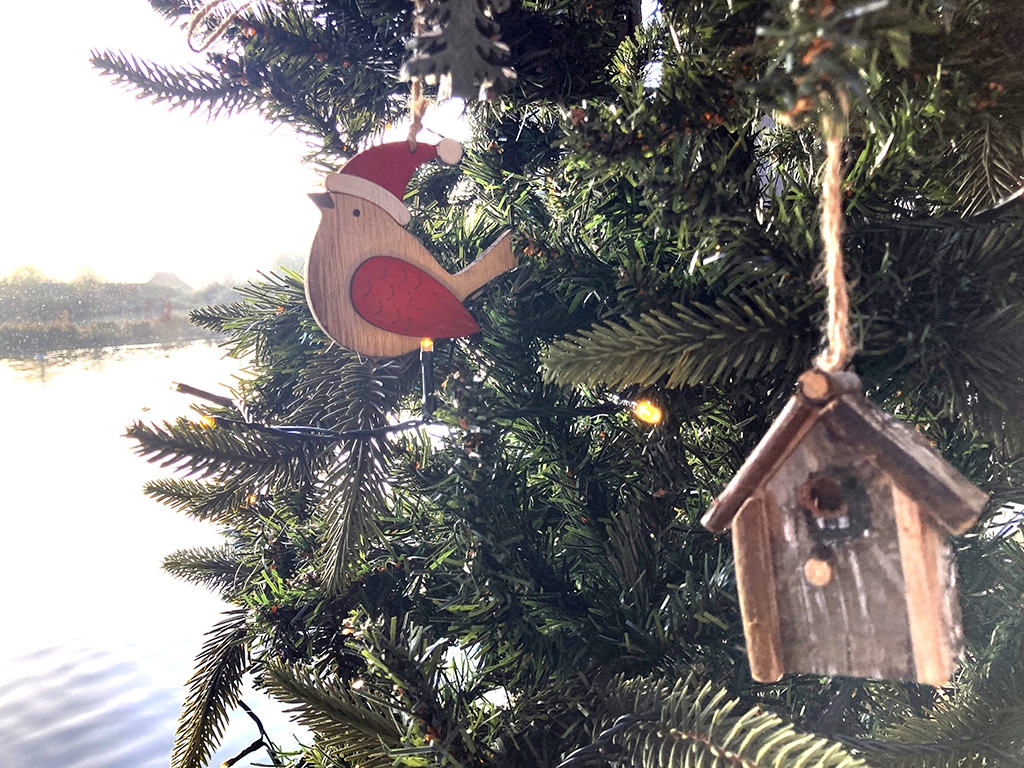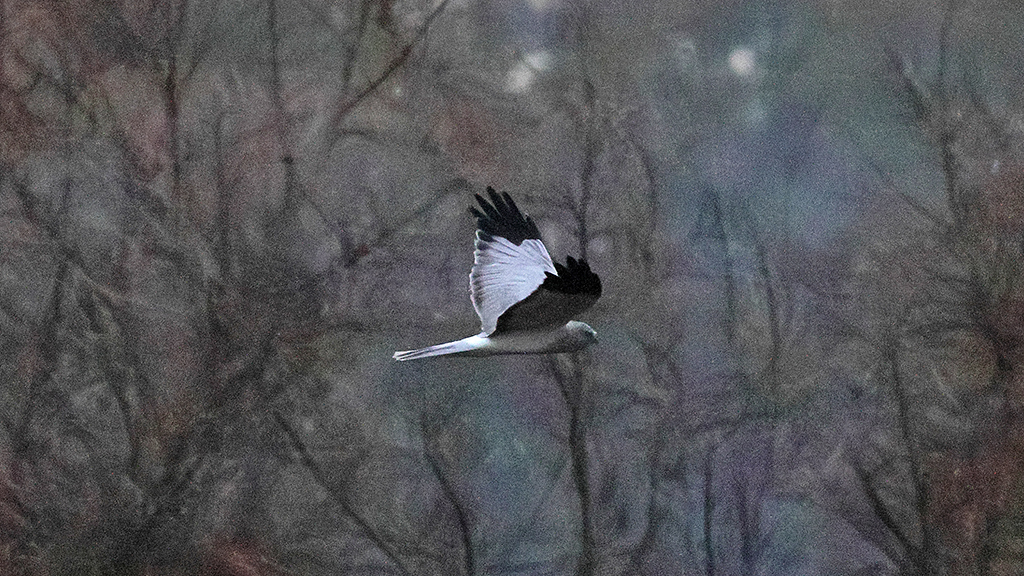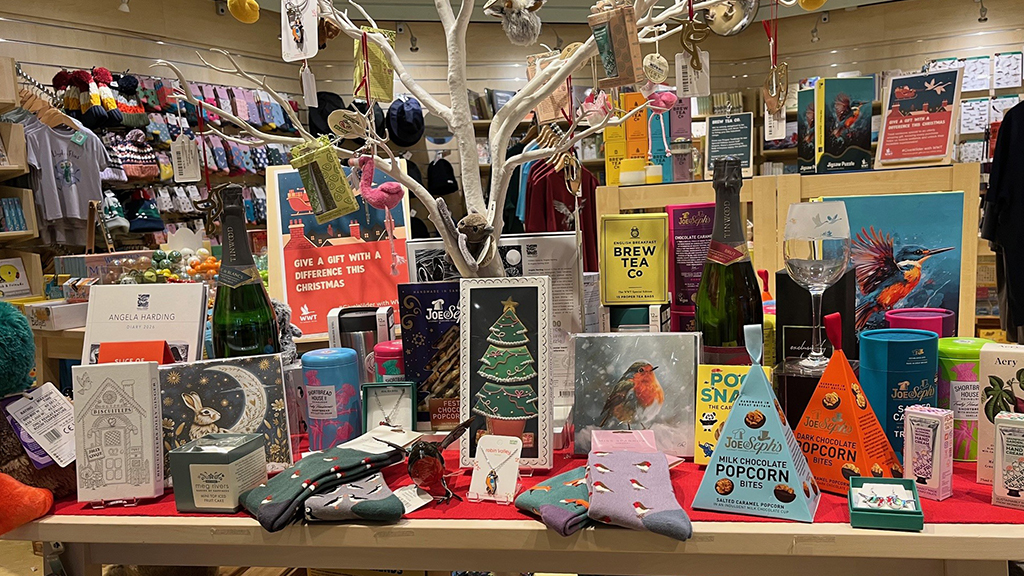Nesting wildlife update this Spring
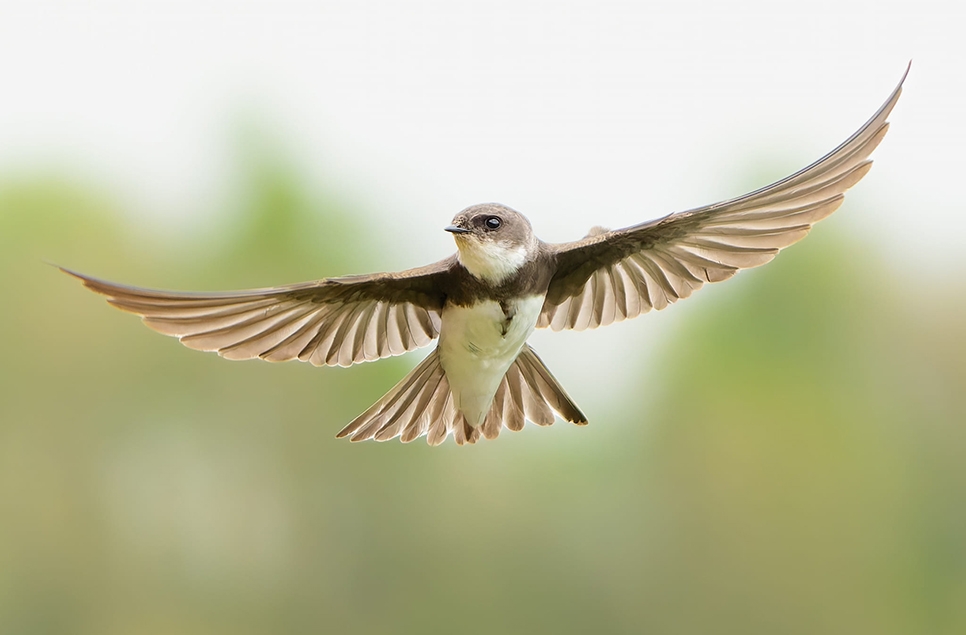
The joys of spring are well underway. Birds are singing, nest building and in some cases already hatching young.
Treat your senses to wildflowers blooming, insects buzzing and birdsong in the air as wildlife awakens throughout the wetlands. Bring your binoculars and a camera to capture new families of wild birds from afar and remember to look at the little things like insects and flowers that are close to you to really connect with nature this season.
Sand Martin nesting bank
The sand martins have retuned and have been bringing nesting materials into the holes of the nesting banks at the Sand Martin hide. Regular visitor Cam Parfitt took this lovely photo of a sand martin in flight at the hide this week. In March we finished clearing the sand martin hide for them before their return, despite having been thwarted several times over the winter by a hibernating brown long-eared bat that we couldn't disturb! Last year we had a total of 38 sand martin nests, the highest number yet and almost double the 2022 nest numbers.
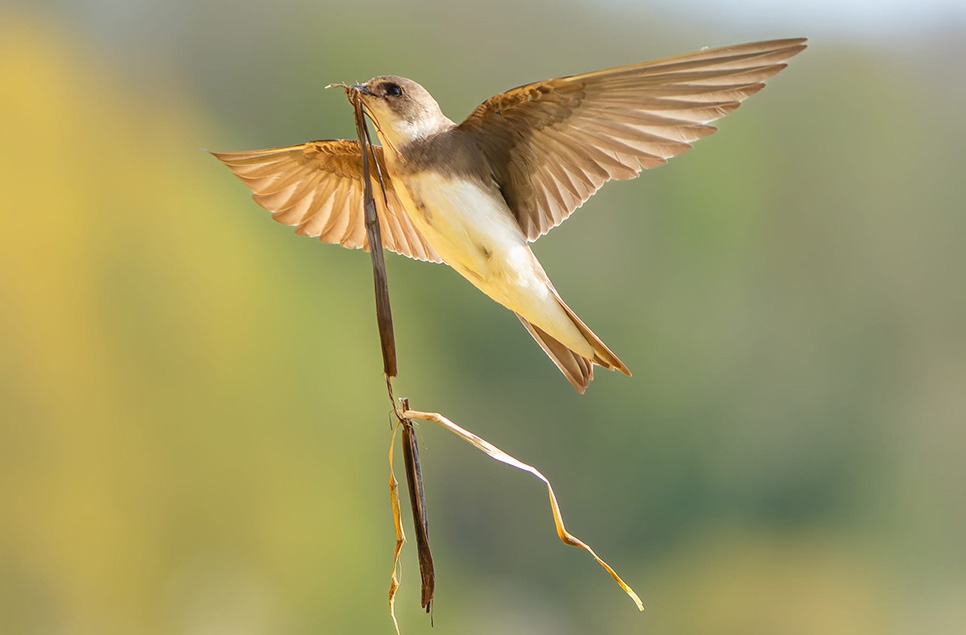
A sand martin carries nesting material Photo: Cam Parfitt
When the Sand Martin hide was built, we wrongly assumed that the sand martins would like to excavate their own nests and so filled some chambers and holes with sand whilst leaving others more open to see what their preference would be. The preference has been for open holes with very little sand in the chambers, as the martins bring in quite a lot of nesting material. We have now made sure that all 300 holes are open and clear, with minimal sand in each chamber. Given the increased nesting opportunities, we are hopeful for a bumper year this breeding season.
Look out for lapwing chicks
Lapwings have paired up and have been nesting on the wet grassland for the past few weeks. They are trying their hardest to keep crows, gulls and herons away from nest sites. The mottled markings on the tiny lapwing chick help it to camouflage in the dirt and grass. The adults give a warning call when danger is spotted and the chicks crouch and freeze, blending into the grass and dirt. The parents fly at any attackers, mobbing them until the threat flies away.
The wetland vegetation grows quickly in spring and monitoring these nests on our wildlife surveys becomes a challenge.
Goslings a-plenty
Greylag geese are now marching troops of goslings, forever eating as they go. It is easy to spot these families from the pathways and children love to watch them. The adult geese will hiss at people but give them plenty of space and walk slowly. Mallard families tend to favour the waterways so look in the ditches and under the trees in the Wood Loop.
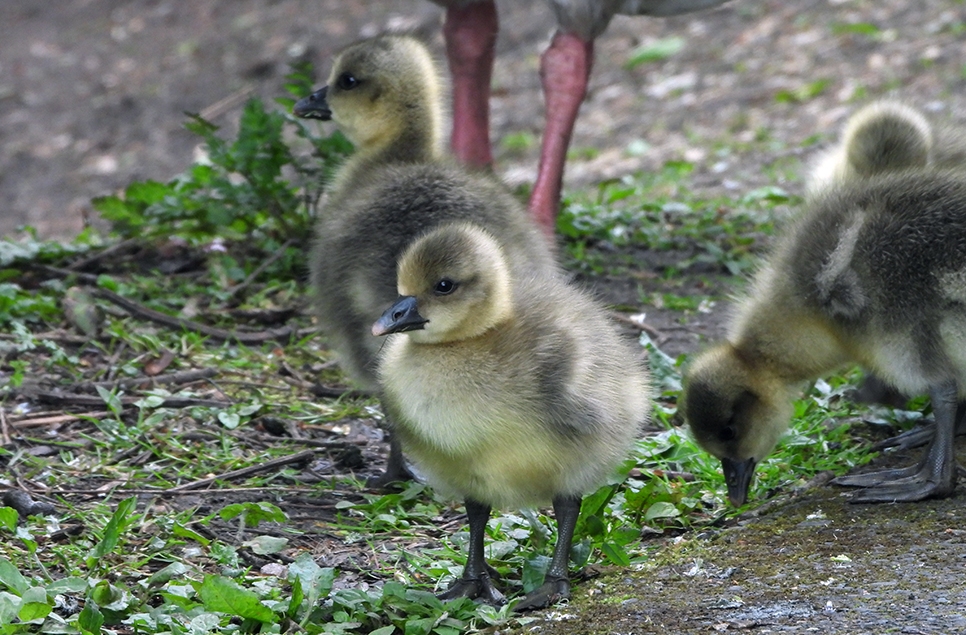
Kingfishers on Arun Riverlife
The kingfishers have gone very quiet, but they always do when they are incubating eggs. We are hopeful that something positive is happening as we have seen a male kingfisher taking fish into the favourite nest hole 5 - we will just have to wait and see.
If they are on eggs we expect a first brood to hatch in May. Look for a flash of blue across the water and they often sit and fish from the perches around the bank.
Coots and moorhens
Moorhens are raising chicks on the front pond along the entrance boardwalk to our wetland centre and have been spotted in the Woodloop area. Moorhens build a raised nest among the reeds and venture out with their black, puffball offspring in tow. The chicks have balding heads, reddish faces and a wisp of white around their necks. Moorhens are good parents constantly feeding their young. When these chicks become juveniles they will help care for the next brood to hatch.
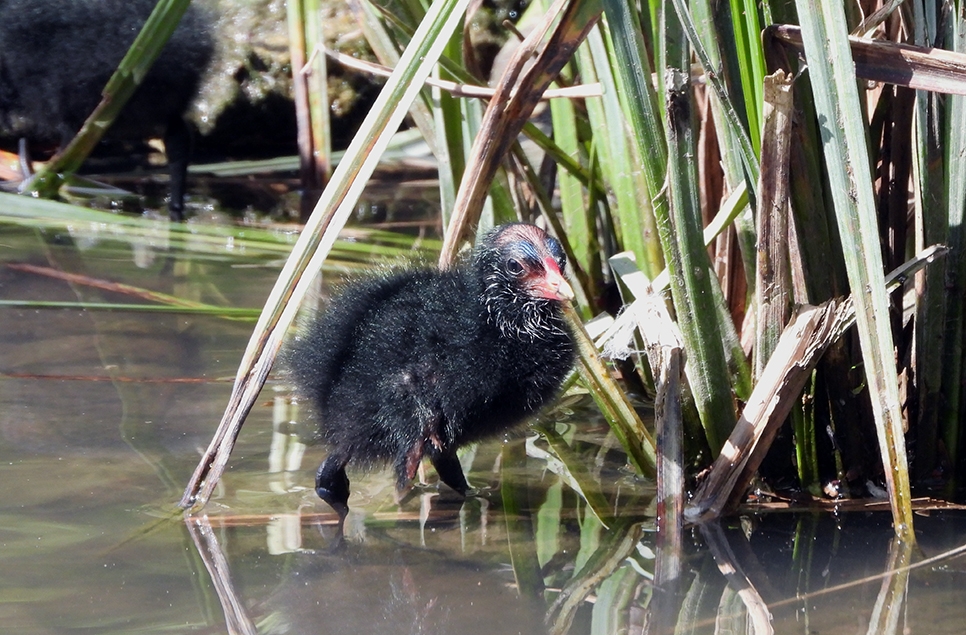
Moorhen chick in the Woodloop area Photo: Andrew Burns
Coots are nesting in the natural water treatment pond among the marsh marigolds in front of the Coastal Creek Aviary. There challenge is to keep the coot chicks trying to undercover, away from the predatory herring gulls that hang about. The coot chicks have bald heads with an orangey-red fluff around their face and body. Very brightly coloured for a bird that eventually is black and white.
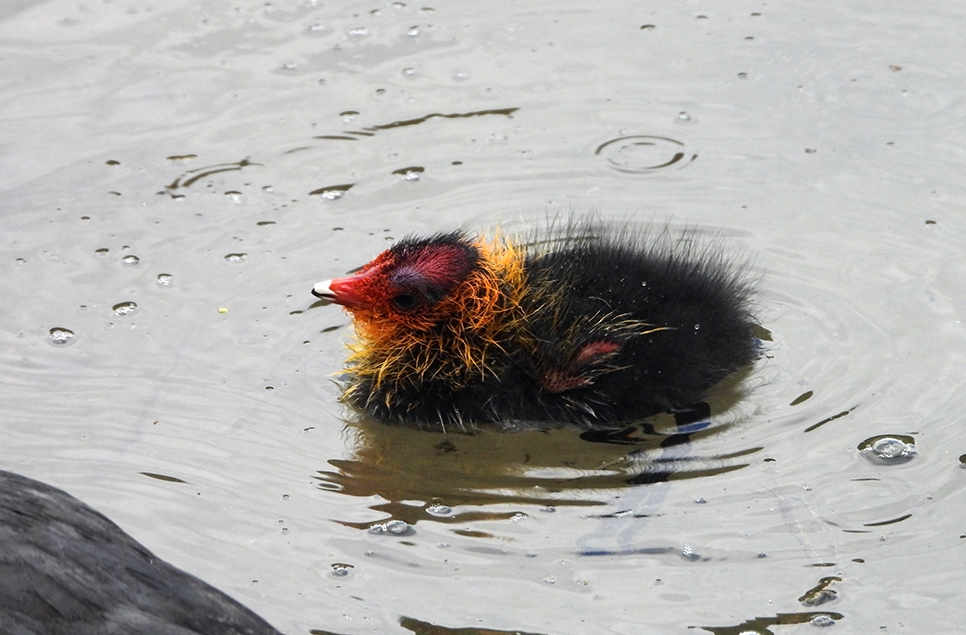
'Cute' coot chick near Coastal Creek aviary Photo: Andrew Burns
Are the oystercatchers nesting?
In past year the two pair of oystercatchers that visit our site would be on sitting on eggs by now. Both pair do seem to be back onsite but they haven't settled in to any nesting spots yet. A pair are hanging around the sand martin hide - in past they have nested on the roof and on an island.
The second pair is hanging about the gravel island on Arun Riverlife and Pelican Cove but have not nested. Their previous nesting spot in the area around Coastal Creek is more active with a new pathway and has more vegetation than in past year so they may be looking for a new spot. They have been feeding in the Reed swamp area so may even choose to nest there.
Wetland carpet of wildflowers
A sea of yellow marsh marigolds are now in flower across the natural water treatment pond between Pelican Cove and Coastal Creek aviary. Staff and volunteers have planted the marigolds and other wetlands species since the aviary was built to act as natural filtration to help clean the water.
Primrose have now been joined by the extra colour of white and red dead nettle, purple bugles of ground ivy, cowslip, coltsfoot, lungwort, forget-me-not, violets, lady’s smock and snake’s head fritillary.
Creeping and Crawling
Reptiles are once again becoming a regular sight, with grass snakes basking on paths and under refugia (survey tins). A common lizard was spotted on one of our butterfly banks last week. Toad tadpoles have been seen en masse on the entrance ponds on sunny days, so we should see a good emergence of toadlets in June. In the meantime, I’m sure grass snakes will be attracted to this food bounty!
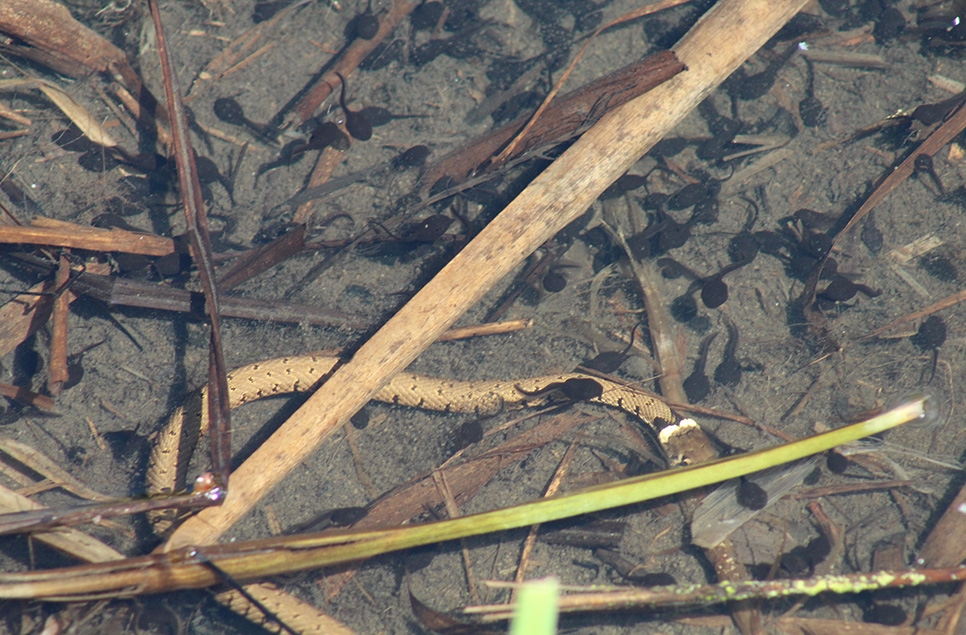
Toad tadpoles in the front pond at Arundel Photo: Emma Jacob
What's the buzz?
Orange-tip, peacock and brimstone butterflies, bee-flies, white-tailed, buff-tailed, red-tailed and early bumblebees and red mason bees can be seen on sunnier days. Large red damselflies are now on the wing and will soon be followed by other species such as common blue, azure and blue-tailed damselflies.
Ready to visit?
If you've been inspired to explore Arundel Wetland Centre, find out more and plan your visit online.
Plan your visit
Ready to visit?
If you've been inspired to explore Arundel Wetland Centre, find out more and plan your visit online.
Plan your visit